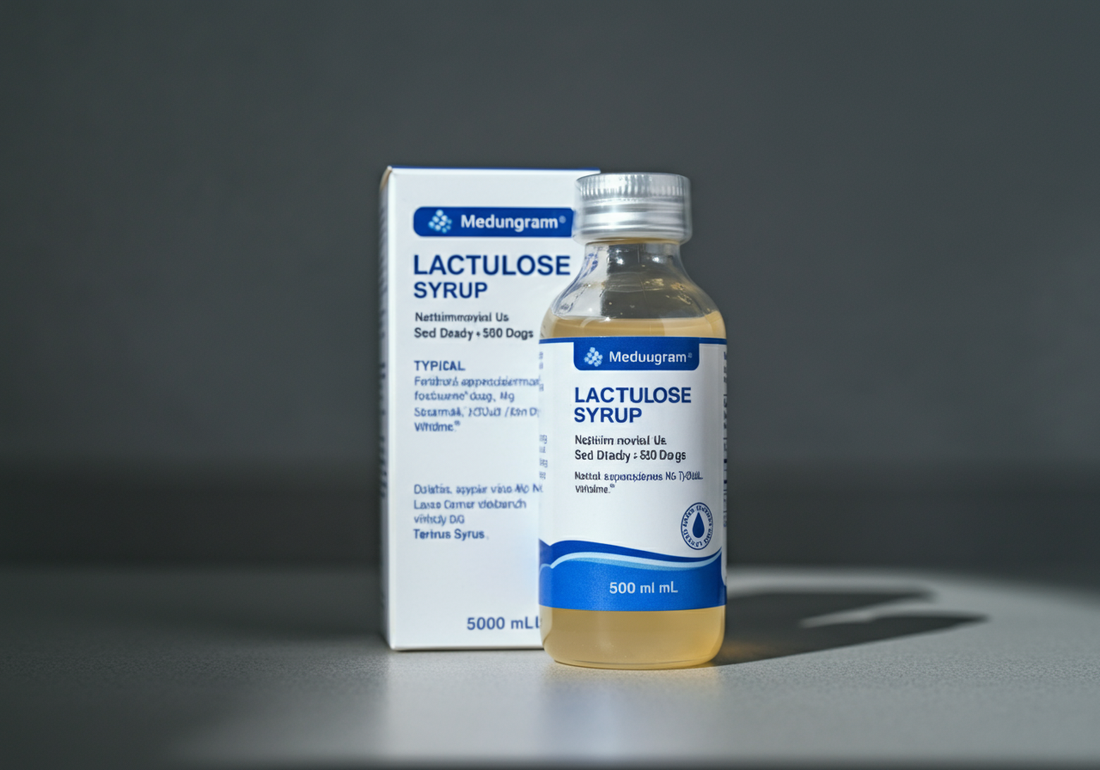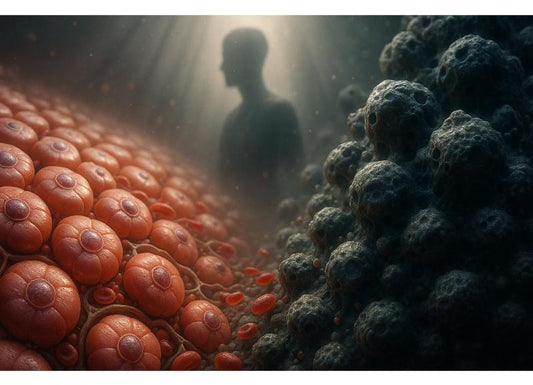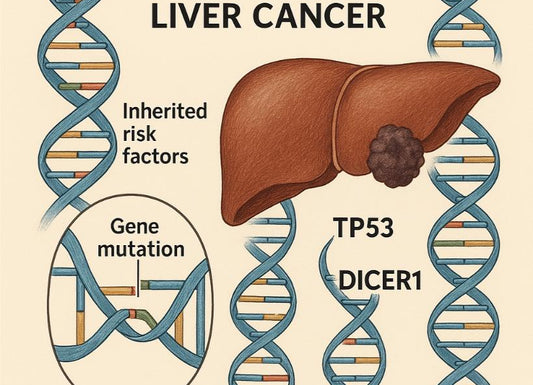How long should you take lactulose for liver disease?
 Written By
Blen Shumiye, MD
Written By
Blen Shumiye, MD

If you’ve been prescribed lactulose for liver disease, you may be wondering how long you’ll need to take it. Lactulose is commonly used to treat hepatic encephalopathy (HE) — a complication of advanced liver disease where toxins like ammonia build up in the blood and affect brain function. But is lactulose a short-term solution, or will you need it for life?
In this guide, we’ll explain how lactulose works, why it’s prescribed, how long treatment usually lasts, and what factors affect the duration of therapy. We’ll also cover possible side effects, alternatives, and tips for using lactulose effectively.
What is lactulose?
Lactulose is a synthetic sugar that acts as a laxative and helps lower blood ammonia levels. It’s not absorbed into the bloodstream. Instead, it travels to the colon, where gut bacteria break it down. This process makes the colon more acidic, pulling ammonia from the blood into the gut so it can be excreted in stool.
Why is lactulose prescribed for liver disease?
People with advanced liver disease may have trouble clearing toxins like ammonia. This can lead to hepatic encephalopathy (HE), which causes confusion, difficulty concentrating, mood changes, and in severe cases, coma.
Lactulose helps by:
-
Reducing ammonia absorption in the intestines.
-
Encouraging more frequent bowel movements.
-
Restoring a healthier gut environment.
How long should you take lactulose for liver disease?

The answer depends on your diagnosis and response to treatment.
Short-term use
-
For people with an acute episode of HE, lactulose may be prescribed until symptoms improve.
-
Once stabilized, doctors may taper the dose or stop it if the underlying liver issue improves.
Long-term use
-
Many people with chronic liver disease or cirrhosis require lactulose indefinitely.
-
Lactulose is often used as maintenance therapy to prevent recurrent episodes of HE.
-
Some patients may need lifelong treatment unless they undergo a liver transplant.
Individualized treatment
-
Duration depends on your liver function, recurrence of symptoms, tolerance of lactulose, and overall treatment plan.
-
Your doctor will adjust the dose based on stool frequency and symptom control.
What’s the usual dosing schedule?
-
Lactulose is usually started at 30–45 mL, two to four times daily.
-
The goal is 2–3 soft bowel movements per day.
-
Too little may not control ammonia; too much can cause diarrhea and dehydration.
What happens if you stop lactulose too soon?
If lactulose is discontinued before your liver has improved or without doctor guidance:
-
Ammonia may build up again.
-
Risk of recurrent hepatic encephalopathy increases.
-
Symptoms like confusion, poor concentration, or sleep changes may return.
This is why many patients remain on lactulose long-term under medical supervision.
Side effects of long-term lactulose use
While generally safe, lactulose can cause:
-
Bloating and gas
-
Cramping
-
Diarrhea
-
Dehydration (if excessive)
-
Electrolyte imbalance (rare but possible)
To minimize side effects:
-
Adjust the dose slowly.
-
Drink plenty of water.
-
Monitor bowel movement frequency.
Alternatives and add-on treatments
Sometimes lactulose alone isn’t enough, or patients can’t tolerate it. Alternatives include:
-
Rifaximin: An antibiotic that reduces ammonia-producing bacteria.
-
Neomycin or metronidazole: Less commonly used due to side effects.
-
Liver transplant: The only definitive cure for advanced cirrhosis and recurrent HE.
Most patients do best with lactulose plus rifaximin for preventing HE relapses.
Lifestyle tips while taking lactulose
-
Stay hydrated: Prevents dehydration from frequent stools.
-
Limit alcohol: Protects liver function.
-
Eat a balanced diet: Include adequate protein but avoid excess red meat.
-
Follow medication schedules: Consistency is key for preventing HE.
-
Track bowel movements: Share notes with your doctor to optimize dosing.
How doctors monitor lactulose therapy

Regular follow-up may include:
-
Clinical exams: Checking mental status and neurological signs.
-
Lab tests: Liver function tests, electrolytes, and ammonia levels.
-
Imaging or liver scans: If needed to monitor progression of cirrhosis.
Monitoring helps decide whether to continue, adjust, or combine lactulose with other therapies.
When is lactulose stopped?

Lactulose may be reduced or discontinued if:
-
The patient undergoes a successful liver transplant.
-
Hepatic encephalopathy is well controlled without recurrences.
-
The patient experiences intolerable side effects (then rifaximin may be substituted).
For most people with ongoing cirrhosis, lactulose is long-term or lifelong.
Takeaway
Lactulose is a cornerstone therapy for hepatic encephalopathy in liver disease. For many patients, it’s not just a short-term fix but a long-term or lifelong treatment to prevent recurrent episodes. The exact duration depends on liver function, recurrence of symptoms, and whether a liver transplant is an option. Most patients tolerate lactulose well once the dose is adjusted, and the benefits far outweigh the side effects. If you’ve been prescribed lactulose, take it consistently, monitor your bowel movements, and follow up with your healthcare provider. This simple medication can make a profound difference in quality of life and long-term health.
Support Your Liver Health with Ribbon Checkup
Ribbon Checkup makes it easy to monitor key health markers right from home. Just dip, scan, and get fast, helpful insights.
Try Ribbon Checkup today—take a simple step toward prevention.
Related Resources
-
Does Exercise Help Liver Cirrhosis? – Lifestyle tips for cirrhosis management.
-
Can Liver Function Tests Be Normal with Cirrhosis? – Understanding confusing test results.
-
Signs Your Liver Is Healing – Positive signs of recovery.
FAQs
Are liver nodules always cancerous?
No. Many nodules are benign, though some may be cancerous or precancerous.
How are liver nodules detected?
They are usually found during imaging scans such as ultrasounds, CTs, or MRIs.
Do liver nodules need treatment?
Benign nodules may not need treatment, but suspicious ones may require biopsy or surgery.
What are risk factors for malignant liver nodules?
Cirrhosis, chronic hepatitis B or C, and heavy alcohol use increase risk.
References
Bloom, P. P., & Tapper, E. B. (2023). Lactulose in cirrhosis: Current understanding of efficacy, mechanism, and practical considerations. Hepatology Communications, 7(11). https://doi.org/10.1097/hc9.0000000000000295
Lactulose Solution (Encephalopathy). (2023). Retrieved September 17, 2025, from Cleveland Clinic website: https://my.clevelandclinic.org/health/drugs/24707-lactulose-solution-encephalopathy
Lactulose: Uses & Side Effects. (2023). Retrieved September 17, 2025, from Cleveland Clinic website: https://my.clevelandclinic.org/health/drugs/19131-lactulose-solution-constipation
NHS website. (2022, March). How and when to take lactulose. Retrieved September 17, 2025, from nhs.uk website: https://www.nhs.uk/medicines/lactulose/how-and-when-to-take-lactulose/#:~:text=You%20can%20take%20lactulose%20for,take%20it%20for%20many%20months.
Seladi-Schulman, J. (2024, November 19). How Does Lactulose Help Treat Cirrhosis? Retrieved September 17, 2025, from Healthline website: https://www.healthline.com/health/lactulose-for-cirrhosis

Dr. Blen is a seasoned medical writer and General Practitioner with over five years of clinical experience. She blends deep medical expertise with a gift for clear, compassionate communication to create evidence-based content that informs and empowers. Her work spans clinical research, patient education, and health journalism, establishing her as a trusted voice in both professional and public health spheres.



